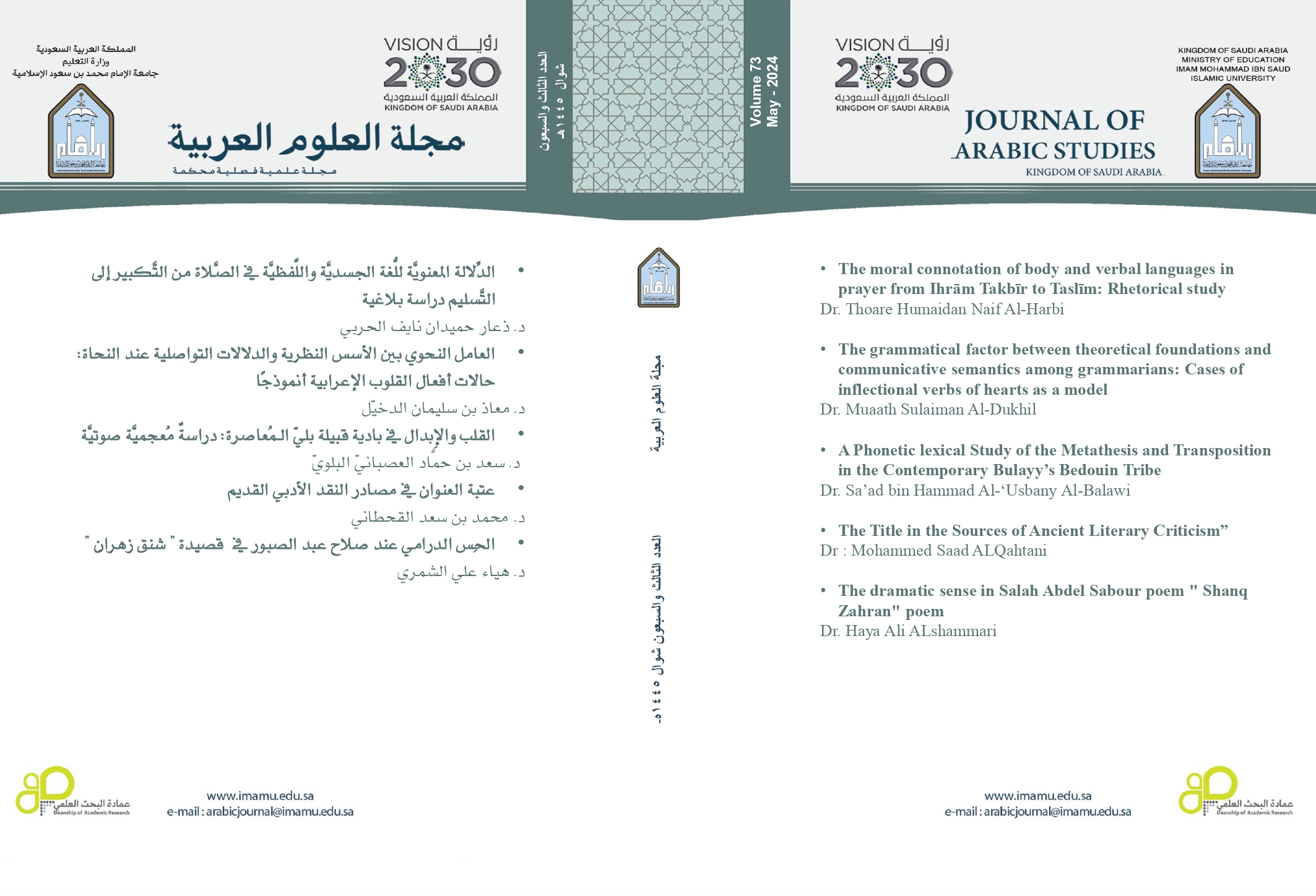The moral connotation of body and verbal languages in prayer from Ihrām Takbīr to Taslīm
Rhetorical study
Keywords:
اللغة الجسدية, اللغة اللفظية, السيمولوجيا, الحال المشاهدة, النِّصبة.Abstract
The study aimed at an interdisciplinary study combining rhetoric and semiology besides using Islamic jurisprudence and the Sunnah. It studies rhetoric, as eloquence and connotation, that lie within the prayer, from Ihrām Takbīr to Taslīm, expressed by either body language or verbal language or both. This is subject to what is required by the situation and conformity with individuals’ circumstances and gender. What could be inferred from body language would be associated to the science of significance, eloquence or discourse ornament. The body language uses personification to turn the abstract into perceptible so that it settles in the mind. persuades and influences, such as the last sitting of testimony which exceeds the sitting for the first testimony to denote the end of the prayer. In addition, the raising of the two hands joint with Takbīr is an emphasis by both languages on the surrendering to Allah. The minor imamte in prayer and the major imamte in politics are analogue, suggesting that prayer is a behavior which enlightens life, in the sense that it guides the behaviour of the individual, the community, the domicile, the State and the universe, The index finger raising and lowering while performing the sitting of testimony is a from of body language harmony. The glorification of Allah loudly by men to alert the imam against inattentiveness or forgetfulness during the prayer while the women just clap their hands, as their voice is a kind of imperfection. In all these cases, the use of both languages is to alert, where the synonymy, the body language, the context and circumstances shed all light upon the unseen meaning in appropriateness and conformity with spatial-situational dimension.
Keywords: body language, verbal language, semiology, circumstantial, Arabic subjunctive mood




